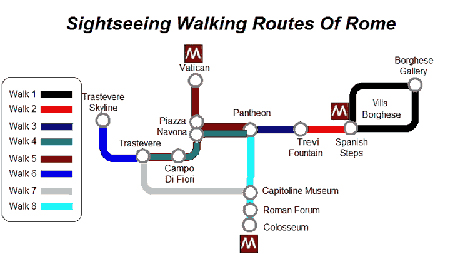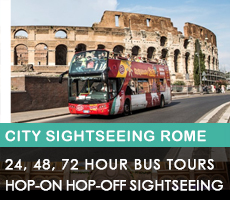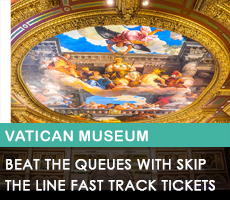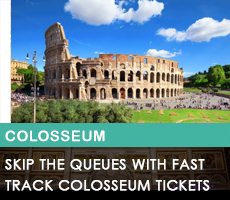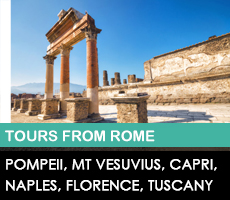Visiting the Trevi Fountain in Rome
What is the Trevi Fountain? Location and practical guide to visiting independently
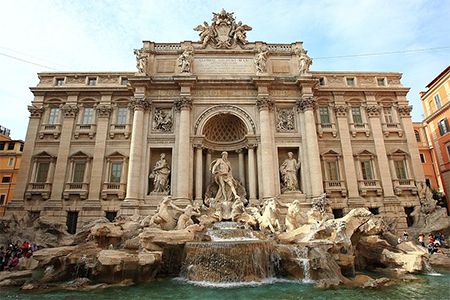
The Trevi Fountain is in the Trevi district; the location is the Via delle Muratte in the heart of the city of Rome. The closest Metro stop is Barberini, though it is also only a 10-minute walk from the Spanish Steps.
Many tourists walk between the two. On this page we have details of walking tours between these and other Rome attractions.
The Trevi Fountain is the most famous of all the fountains in Rome attracting most first-time visitors as a 'must see'. As a result it can at peak times get very crowded. Come first thing or later in the evening if you wish to have a little more space to yourself.
The lights at night-time at the Trevi Fountain can be quite dramatic. Evening is a great time to visit, prior to finding somewhere to eat in the maze of streets all around. It is tradition to throw a coin into the fountain to ensure your return to Rome.
What is the Trevi Fountain?
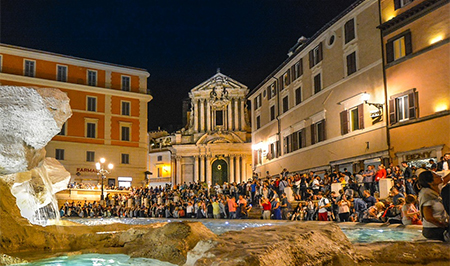
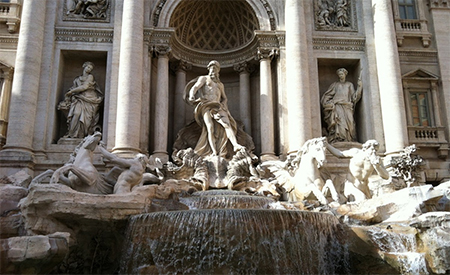
The Trevi Fountain is the largest Baroque fountain in the city. It was founded at the end of an aqueduct constructed in 19 BC to bring water to Rome from around 20km away which supplies the fountains in the historic centre of Rome with water.
The current Trevi Fountain was designed as a large basin in a semicircular shape sunk slightly below pavement level. This creates a natural amphitheatre for visitors.
Although there is always a crowd hanging around, it is normally good-natured and you should get a good vantage point.
The fountain has had several versions. It took three centuries to complete and is often attributed to Bernini, but for the most part it is the work of the Roman architect, Nicola Salvi.
The central figure of the fountain, in front of a large niche, is Neptune, god of the sea. He is riding a chariot in the shape of a shell, pulled by two sea horses. Each sea horse is guided by a Triton. One of the horses is calm and obedient, the other one restive. They symbolise the fluctuating moods of the sea.
On the left hand side of Neptune is a statue representing Abundance, the statue on the right represents Salubrity. The water at the bottom of the fountain represents the sea.
When you throw your coin into the water, you should toss it over your shoulder with your back to the fountain. Approximately €2,000 is thrown into the Trevi Fountain each week and the coins are collected at night, and used to subsidise a supermarket for Rome's poor population.
The Trevi Fountain has more recently undergone a €2.2 million refurbishment.
Getting to the Trevi Fountain
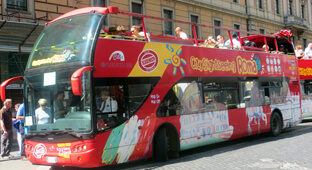
The narrow streets of Ancient Rome where you find the Trevi Fountain are far too narrow for buses to come up to the fountain itself. All the popular hop-on hop-off sightseeing buses have a stop a few minutes' walk, but stops do vary from line to line, some are much closer than others.
The Via Del Tritone is less than a hundred yards from the Trevi Fountain and at last count 15 Rome city buses run along here to and from Barberini.
The Trevi Fountain is in the heart of the city centre and is best approached by foot from another attraction, possibly the Pantheon or the Spanish Steps, both signposted for pedestrians. Spagana (Spanish Steps) and Barberini are the nearest Metro stations.
Free self-guided walks from/to Trevi Fountain
There really is only one way of exploring the ancient city centre of Rome and that's to walk.
Not only is walking the most practical way of visiting all the sights in the ancient city centre it's also by far the most rewarding way.
For those who want to explore at their own pace then we have a few free reference walks that connect some of the most famous sights visitors want to see on their visit to Rome. Pick-up a good guide book that can explain what you are seeing and you have the recipe for a great independent adventure.
Free self-guided walk - Spanish Steps to Trevi Fountain
Free self-guided walk - Trevi Fountain to Piazza Navona via the Pantheon
Professional walking tours that take in the Trevi Fountain
If you wish to visit the Trevi Fountain and other famous Rome buildings on a professional guided walking tour rather than wandering at your own pace with a guide book, then tours are available.
On these 2- 2.5 hour walking tours your guide will journey you through the essential places in historic centre of Rome, including the Trevi Fountain, Rome Pantheon, and the Piazza Navona.
The second tour also gives you the option to upgrade to include a tour of the Colosseum and other Ancient Rome sites beforehand.
Your guide will inspire you with entertaining stories to give you a deeper knowledge of the ancient Rome you came here to learn about.
BEST OF ROME WALKING TOUR
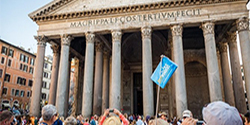
• Visit Pantheon, Piazza Navona and Trevi Fountain • 2-hour walking tour • Led by local guide • End at dinner time in Piazza Navona, lined with restaurants and cafés
ANCIENT ROME WALKING TOUR

• Visit Spanish steps, Trevi, Piazza Navona and Pantheon • Small group tour • Led by local guide • Enjoy a home-made Italian gelato/ cappuccino/hot chocolate • Option to add on Colosseum/ Roman Forum + Palatine Hill
Hotels near the Trevi Fountain
For a selection of recommended hotels near the Trevi Fountain see our dedicated page.


